Aurelian
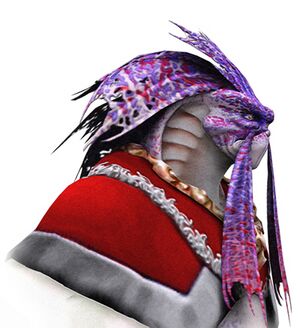
Aurelians are a bipedal, avian race from the planet Aurelia. They stand taller than most Humans, and have bright multicolored feathers and blue eyes, but other color variations may exist. Although resembling birds, the Aurelians do have humanoid arms and legs, and are perfectly capable of using devices like a tricorder. (TAS: "Yesteryear")
They originally developed on the planet Skoria and are genetically descended from the Skorr species found there.
The Biological Evolution of the Skorr and Aurelian Species[edit]
Among all of the various species of the galaxy, hidden away behind a class G star named Alakaram is a world named Skoria. It is on this world over 1 billion years ago that life emerged. And while we are now aware that the proliferation of life is not a singular event, it is apparently a very precious event.
On the world of Skoria, life began as it did elsewhere throughout the universe; as sludge comprised of simple proteins and single-celled organisms. For millions of years these proteins mutated and composed more and more complex symphonies of life. Eventually communities of similar proteins formed, establishing the first pseudomulti-celled organisms on the planet. These bizarre creatures further specialized to carry on differing functions within the colonies, creating the complex strands that would later become Deoxyribonucleic Acid or DNA.
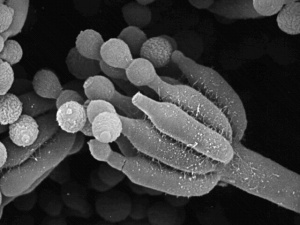
After almost 200 million years, the first exothermic creatures crawled out of the sludge and stared at the stars and the skies for the first time. These early creatures called Erothropes were incapable of long-term survival away from the pools that spawned them. They were blind, deaf and could only locate food through an acute sense of vibration. The Earliest recorded fossils of Erothropes suggest that the creatures were hardly capable of movement outside of the liquid medium that they were born into. These fossils are not widespread, and so many of the fossils vary within only a few kilometers that Paleontologists believe the Erothrope to be specifically adapted to their particular pool of sludge and slime. These odd creatures were so specialized that the slightest contact with a sludge pool other than their own would be fatal to them. It seemed the interaction between pools was limited to an occasional mixing among pools caused by changes in weather and water patterns. During the formative period that the Erothropes flourished massive changes in the chemical compositions of their pools nearly destroyed them in their entirety. In fact, the species was so nearly destroyed by the primal conditions that the population is believed to have numbered only a few hundred thousand worldwide.
Despite the difficulties Erothropes encountered, they managed to survive and mutate into an organism similar to that of the Terran jellyfish. While still an incredibly simple organism, these new creatures proved more readily able to adapt to the rapid changes of Skoria. The creatures could mingle freely between pools, now beginning to form into large shallow seas and lakes, without worry of poisoning. The new species, named Tetharopes, were quickly the kings of the world that they inhabited. They fed solely on each other, and competition for life in the squalid seas of Skoria was vicious. Tetharopes proved quick to adapt to their surroundings. Clever camouflage techniques, hunting methods and defense mechanisms were developed. It is believed that as many as 300 distinct species of Tetharopes became extinct each day, until finally only the strongest, hardiest animals survived.
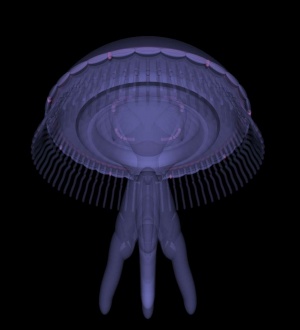
While the Tetharopes were struggling for survival, a new type of organism developed from the complex nucleotides remaining from the previous era. These organisms termed Gargots were the first plant Structures to appear on the planet of Skoria. Gargots were slender, poisonous plants. They are the earliest known species to use photosynthesis on that planet. Gargots were primarily found along the edges of pools, where they siphoned off the precious minerals that they needed for their survival. The hardiest of Gargots eventually developed advanced root systems that allowed them to anchor themselves into the soil and extract the minerals directly from the soil. This relatively new evolutionary advantage allowed the surface of Skoria to be covered by an unheard of number of living species. As the Gargots spread across the face of the world, they mutated to meet the challenging demands of their new environment. After only 50 million years, the Gargot had spread to nearly every comer of the globe and was composed of thousands of distinct subspecies. The table had been set for the rapid spread of life to take place.
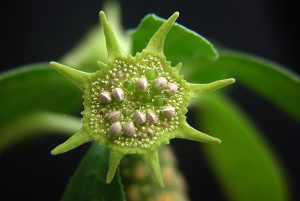
While paleontologists have been unable to completely follow the evolutionary progress of the Tetharopes and the Gargots as completely as they'd like, one thing is certain. Over a period of approximately 100 to 150 million years, Tetharopes developed the ability to breathe air. Along with this remarkable biochemical adjustment they also developed a reliable means of locomotion. Fossils dating from this age are very rare, but almost every fossil from this era shows the distinct development of the flipper. This powerful appendage allowed unparalleled mobility and speed. The design of the flipper was so radical, in fact, that nearly every non-flippered species became extinct within the span of a few millennia. While the Tetharopes were becoming better suited to their environment, the Gargots were doing the same. Roughly 10 million years after their initial appearance on the edges of the sludge pools, Gargots held the undisputed title for the most prolific species of their time. Gargot fossils from this era are the most numerous from any period of Skorr Natural History. These fossils clearly demonstrate the immense diversity that the early Gargot possessed. To date over 300 billion different mutations and subspecies have been positively identified, and it is suspected that this encompasses only 15% of the total likely species that were present during this era.
Historically, somewhere around the period of 600 million years ago, the first truly amphibious creatures emerged from the shallow seas and claimed the solid ground as their birthright. These first creatures were called Aphiopods. The earliest Aphiopods could only remain free from the needed moisture of the seas for a few hours. This was long enough, however, to allow these pioneers to develop a taste for early Gargots. And ironically enough the Gargot would also develop a taste for them.
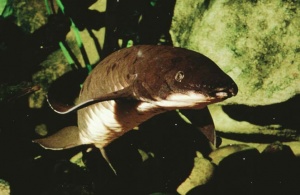
As the Aphiopods became better accustomed to prolonged departure from the seas, they began to develop better defenses against the few Gargots that fed on them. This in tum stimulated the Gargots to develop defenses of their own.
By around 550 million years ago, the first Firapods appeared. These small clumsy animals were the direct descendants of the earliest amphibious creatures. They had disposed of the need to return to the seas and instead began to live their entire life spans on dry land. They primarily ate the course leaves of the early Gargots although a distinct subspecies of Firapods made its first appearance within a matter of millennia. This subspecies was called the Garthropods and were the first effective carnivores on Skoria.
Not long after the appearance of the Garthropods and the Firapods severe changes in climate began to take place. The first of these changes was a direct result of the cooling of the planetary core. The seawaters receded as more of the available water began to be locked up in the arctic ice packs. As the seas receded, the climate and ecosystems that they affected changed as well. New niches were created by this event, and life took full advantage of these alterations. Tectonic activity increased as the continental shelves expanded as they cooled. Massive ranges of mountains and deep gorges divided the continents into various regions. Plant and animal life became more specialized to the ecosystem that they lived in. Life bloomed and grabbed a firm foothold. Life was here to stay.
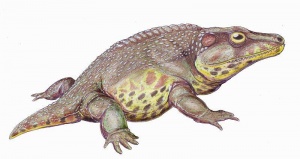
The species known as the Skorr/Aurelian can trace their genetic ancestry back to a small flightless bird known as Pithonarium Psionisium or the "Starget." The Starget was a small bird weighing roughly 5 kilograms. This bird was an excellent hunter, possessing sharp grasping claws and powerful legs. The beaks of this bird were powerful and serrated, allowing the creature to crush bone as effectively as tearing meat. The strong legs of the bird allowed it to climb trees and other natural features quickly, and thus escape predators. But the physical prowess of the bird was not its most amazing feature that distinction belonged to the brain of the animal.
The brain of the Starget was a very complex mass of neurogenic tissue. The animal possessed keen eyesight and probably was reasonably intelligent. The most amazing aspect of the bird was its forebrain, however. The bird possessed a highly developed occipital lobe. While this is not uncommon in sentient beings, the presence in a lower animal life form is rare indeed. The association of the Starget's occipital lobe to the remainder of the forebrain was unique as well. The unique configuration points to the possibility that the small flightless bird actually possessed limited telepathy. While this is supposed, it has never been confirmed, as no living member of the species exist to this present day.
What is well documented, however, is that the Starget evolved into larger and larger flightless birds, until eventually it culminated in the Shargrith or Pitonarium Garithulae. This large bird weighed over 300 kilograms and stood as tall as the average human. Its powerful; beak could slit small trees, and it was every bit a predatory bird. While other Birds took to the sky, the Shargrith hunted larger land animals.
But size had its disadvantages; the Shargrith was nearly driven to extinction as the environment it roamed slowly changed. The Shargrith gave way to a smaller more compact mutation of itself. This mutation was capable of breeding with other avian species, and adopting the various habits and benefits that their diversity allowed for. This species of Bird, the Hartrill, or Pitonarium Garithulae Minimus would soon die out as an independent species, but not before passing its own genetic composition to several competing species.
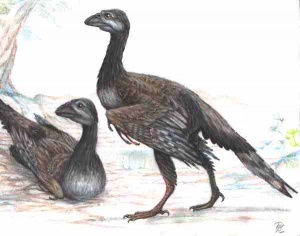
The winner of the evolutionary race on Skoria would be a little known avian species called a Manumit, or Catheria Mamulain, a direct descendant of the Hartrill. This small creature would prove to be the correct mix of genetics, intelligence and mobility needed to rise to dominance on the Skorr home world.
The Manumit was by far the most unlikely creature to rise to the pinnacle of evolutionary perfection. A strange mix of Avian, mammal and reptile, the unusual beast possessed a pair of arms, legs and wings. This unique hexipedal creature would be the forerunner to the Skorr and Aurelian Species. Students of Paleontology argue over the evolutionary pressures that caused this unique creature to undertake such a radical diversion from the generally accepted path of evolution.
In the entire known Alpha Quadrant Only the Skorr and the Aurelians actually evolved wings, arms and legs. The small creature that they originated from used the primitive limbs to climb high into trees. From his newly acquired lofty perch the Manumit would glide down to the ground or to other nearby trees. The creature originally was covered by thick fur, and possessed the warm-blooded aspects of an avian. Only after several hundred years of evolution did the creature eventually develop the strength in its wings to allow for flight. At first, even this was difficult to accomplish, as the skeleton of the Manumit was still quite heavy. As the struggle for survival, brought about by global ecological disaster, became more desperate, the Manumit developed primitive tool using ability. These newly acquired skills would prove to be the decisive edge needed to survive the test of time.
The Manumit evolved over a series of millennia. Each successive generation got smarter and cleverer. The arms and legs lengthened, and the wings compensated for the difference in size. Eventually the body adapted itself towards flight. The bones of the Manumit grew honeycombed and hollow, reducing weight and allowing the creatures to grow bigger. The Manumit also shed its hair-like structures in favor of feathers for aerodynamic reasons. The reptilian ridge that formed the mouth of the beast became extended and hardened. Eventually this structure would become the powerful beak that dominates the Skorr and Aurelian facial features. All of these changes took place over the course of approximately 100 million years; the end result was something completely different.|Category: Species]]
The Prehistoric Skorr and Aurelians[edit]
The most distant ancestor of the Skorr and Aurelian Species are called the Protoskorr. These primitive creatures developed complex social structures based around an Alpha male of the flock. These flocks were theoretically organized according to the strength of the individual members of the species.
Evidence suggests that these primitive flocks possessed a very complex social structure. Archeological sites in the Farbrinn region of Skoria have uncovered primitive burial pits and archaic cave art. Apparently the Protoskorr were inclined to inhabit large subterranean caverns. Large pits were uncovered that contained the gnawed bones of prey that comprised the Protoskorr diet. Among the findings there are the remains of other Protoskorr. Whether these individuals were members of the same tribe or of other competing tribes is unknown at this time. The diet of the Protoskorr consisted primarily of meat. A large variety of smaller avians were the central staple of their diet. At this period in their history, there is no indication that the Protoskorr possessed the knowledge of fire or tools beyond the most rudimentary tools needed for survival.
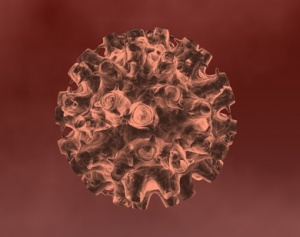
The Physical form of the Protoskorr varied considerably from that of the modern Skorr and Aurelian. The Protoskorr possessed a smaller, less intimidating beak. The beak was specialized to rend flesh rather than allow a more diverse diet, as is the case with the modem Skorr and Aurelian species. The feathers were coarse and colorless, primarily various shades of gray. This is evidenced by the vast number of petrified feathers that have been recovered from this era in Skorr/Aurelian History. The spine of the Protoskorr was shorter and curved in such a manner as to force the Protoskorr into a crouched position. This may have been a direct result of nesting choices. The choice of nesting inside of caverns created a sense of confinement that may have unwittingly forced this unique environmental adaptation. This theory holds true, when you compare later, farther evolved Skorr with the Protoskorr. As the latter species of Skorr do not possess this curved spine and do not nest in subterranean caverns, it is supposed that the unique curved spine is indeed a product of environmental evolution.
The species population of the Protoskorr numbered roughly in the hundreds of thousands. A relatively high birth rate and surprisingly low death rate allowed the quick propagation of the species. But a greater threat would make itself known in the years to come and drive almost the entire species to the brink of extinction.
Roughly around 300 million years ago, a new predator was seen for the first time on Skoria. This predator was efficient, deadly and ruthless. It is expected that it is solely responsible for wiping out the majority of the planet's species within a few centuries. What was this terrible new beast? Disease- that unlike the viruses on other worlds had developed several millions of years before the first multi-cellular organisms- was a relatively new species on Skoria. Viruses ran rampant among the various species on the planet. The weak and strong were slaughtered without mercy. Entire species succumbed to the legacy of extinction, among them many of the key species that the Protoskorr hunted for food. The Protoskorr were driven nearly to the point of extinction, and then a miracle occurred.
A few communities of Protoskorr had migrated out of the caves and caverns that they had been nesting in for thousands of years and they stopped dying of sickness. Scientists attribute this rapid spread of disease to the improper sanitation techniques and the primitive burial procedures that the Protoskorr had adopted. When they removed themselves from the cesspools full of disease and sickness and adopted better burial techniques, the primary source of disease was removed from their immediate proximity. Eventually the Protoskorr developed an immune system that allowed them to combat the various plagues and viruses that ravaged their world. And over the course of a few generations, their backs straightened out and their diets began to change. Within a few hundred years they would be barely recognizable as members of the same genetic stock as their Protoskorr ancestors.
Eventually advances in technology allowed the new species of Skorr/Aurelian to formulate larger and better-organized flocks. The newest species of Skorr/Aurelians were known as the Anteoskorr. It was during the period that the Anteoskorr lived that the first signs of civilization are confirmed. While still a relatively primitive species, the Anteoskorr developed domestication and agriculture over the span of roughly 200 years. This discovery allowed the Anteoskorr to develop primitive territorial boundaries.
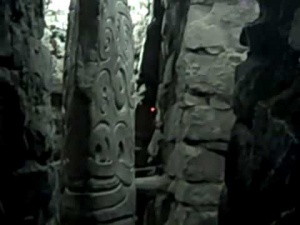
These boundaries, in turn, led to a more organized social and pseudo-political structure. Burial rituals of the Anteoskorr became more elaborate, and the earliest evidence of the belief in an afterlife is seen for the first time in this era.
Archeological sites in various regions reveal a strong social bond around a centralized community fire. Large fire pits dominated the Anteoskorr community. The general impression that is made concerns the social gathering of the community together to divide up the bounty of the harvest and to cook and consume wild game. Although this social interaction was limited, it is believed that the development of advanced linguistics began to develop around this time. While it is a general belief that civilization cannot be founded without language that does not indicate a complex linguistic structure.
Demonstration and simple descriptive phrases can be used in place of a more complicated language to convey ideas and meaning to other members of a community. Storytelling, which almost always develops as a form of social entertainment, however requires a larger and general more complex linguistic base to convey immaterial concepts and thoughts. Since storytelling is a basic concept of communication that develops from a social environment, it stands to reason that the social development of community activities would stimulate and force the expansion of linguistic capability. While the types of stories and informational discussions are unknown, it can be said that a fair amount of scientific exploration and primitive social developmental skills were directly impacted by the development of this linguistic expansion. For a species already extremely social by nature, this critical sharing of ideas and philosophical concepts helped to uniformly shape the direction of Anteoskorr society.
To demonstrate this principle more thoroughly; the Anteoskorr showed rapid development in the areas of agriculture and architecture. The likelihood that the degree of expansion that is shown would develop within a confined geographical area within decades is extremely unlikely. This assertion becomes even more preposterous when evidence of architectural design is present in not one, but thirty different regions, each maintaining only slightly different designs. And these design differences are so minor that they are virtually replicas of the other structures found-the only alterations made are seen to be functional requirements placed upon them by their direct ecological regions.
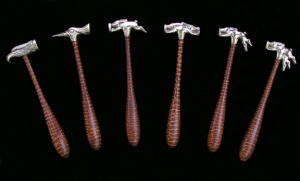
Over the period of several hundred generations the Anteoskorr evolved ever slowly towards the genetic perfection that was to be the modern Skorr and Aurelian species. The new species was taller, stronger and faster than their ancestors were. They were better adapted to consuming a more omnivorous diet.
While the Anteoskorr had little, if any interest in artistic expression, the newer species showed an inclination to create elaborate artistic shrines. The new species were socially more complex and technologically adept. Through the pressures of social change and technological superiority, these new Skorr/Aurelians, the Eremaskorr would develop the basis of modem Skorr/Aurelian Society.
The first contribution that is attributed to the early Eremaskorr is the development of an organized governmental system. This is a grossly inaccurate statement. While the debate over which ancestor of the modern Skorr developed governmental organization continues, take the time to consider a few points.
First, the creation of any social order requires a leadership to be established. Studies have shown that even in a social situation where no uniform structure exists initially, a leadership position will be formed and social order will be established. Second, The establishment of a leadership structure is indeed a form of government. This can be demonstrated by defining the purpose of government. Social Scientists have long determined that government is The social organization required to maintain order and ensure the needs of a large social group are met. These needs include food, shelter and protection and are administered or regulated by the establishment of any governmental body. While the influence of government is not always apparent in these things, government must be present for these needs to be filled on a scale above that of a few individuals Third, if these previous two steps are seen as true, then Government among any species dates back to the earliest formation of tribal communities. And since this is the case it is safer to state that the Eremaskorr was not responsible for the creation of governmental structure, but rather for the creation of the Bureaucratic Structure that is commonly mislabeled as government.
The Eremaskorr indeed were the masters of their worlds. Under their social and linguistic leadership, architecture and agriculture prospered. Irrigation and large social meeting halls were built for the very first time. The first metropolis was constructed during a period of 2,000 years. This massive city spread across an area of 6 square kilometers. Tarimirithia was the greatest wonder of the ancient world.
Massive terraced gardens surrounded the city. Some of these terraced structures rose hundreds of meters into the air. Massive public works supplied the city with water. Large common areas held marketplaces and festivals. But most importantly, the very first organized civilization bearing a political affiliation was established here. The effort of organizing and undertaking these massive projects must have been monumental themselves. Bureaucracy was developed to manage these projects and to ensure that workers would not starve during construction.
And with bureaucracy came literacy. The Eremaskorr were masters of the written word. For the first time in the history of the Skorr/Aurelians we see characteristic linguistics that are most definitely language. The earliest records that the Eremaskorr kept were carved into the shafts of feathers. These shafts were then dipped into a dye. The dye would settle into the carved recesses but run off of the unmarred exteriors of the shafts. The result was rich characters contrasted by the exterior of the shaft. It is suspected that this bizarre medium for communication was chosen for its low weight. Since Eremaskorr messengers would be required to fly an unknown number of kilometers, it makes a great deal of sense to keep the message as light as possible. Another point to be mentioned is that the knowledge of chemistry was still unknown to the Eremaskorr. Thus, although they had a plentiful resource of cellulose material from which paper could be made, they did not possess the knowledge of the process. Where their apparent lack of knowledge in physical sciences was a hindrance to the Eremaskorr, their extensive knowledge of mathematics and architecture was by far an advantage.
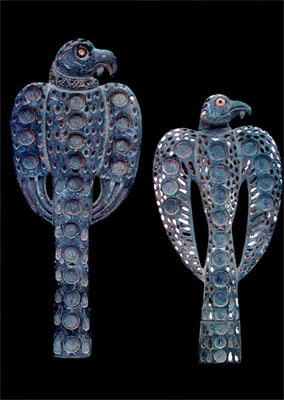
New evidence suggests that the Eremaskorr also had a keen interest in Astronomy. This theory is supported by the precise orientation that their major architectural structures possess. Each major structure is perfectly aligned with the rising of the summer sun. While this is not unique among ancient civilizations, it does show an advanced mathematical aptitude and a distinct interest in the universe that they inhabited.
Where the Eremaskorr were the engineering geniuses of the ancient Skorr world and responsible for the proliferation of ideas and science, they are not the species that was the mainstay of the evolutionary cycle on Skoria. That distinction belonged to the Neoroskorr.
The Neoroskorr were originally an offshoot if the Eremaskorr and like their predecessors they were organized in tight social groups. A major difference in this new species was in breeding habits. While the Eremaskorr were geographically capable of breeding with other tribes of their species, they apparently did not do so often. The result of this generational inbreeding was genetic death. Eventually birth defects and genetic disease began to take their toll. The few tribes that did practice intertribal breeding matured genetically. Some developed early telpathy and other psionic gifts as a result of strong genetic codes; others grew stronger, faster and smarter as a result of their intertribal genetic exchanges. The results of the intertribal breeding resulted in the Neoroskorr being the closest ancestor to the modern Skorr. With the decline of the Eremaskorr the Neoroskorr were easily perched to assume the control of the genetic monarchy.
It is estimated that the Neoroskorr species numbered only in the thousands when they assumed their place in the genetic history books. With the last of their predecessors dead, it looked as if the Neoroskorr would suffer the same genetic death that befell the Eremaskorr. But a slight genetic glitch, actually a defect saved them from that fate. A pair of Chromosomes within the Neoroskorr species simply refused to bond as they were supposed too. A visible result of this was the sudden color that appeared in the feathers of the Neoroskorr. The genetic implications, however, were much more advantageous. This chromosome pair called pair 943a/943b had the bizarre habit of linking to other already mated pairs of chromosomes. This haphazard linking was not limited to a certain pair of linked chromosomes, but instead seemed to occur randomly. This created nearly infinite genetic diversity, which in turn, prevented the genetic decay of the species. To make matters even more confusing, 943a/b sometimes were not present in the offspring of parents that possessed the 943a1b chromosomes. While the assumption is that 943 a/b were responsible for the sudden coloration of the Neoroskorr can be proven, the absence of the chromosomes do not make an individual Skorr devoid of colors. This sole distinction is the primary difference between the Neoroskorr and the Eremaskorr.
Apparently no love was lost between the Eremaskorr and the newer species. A cultural backslide took place. The pinnacle of technology and social order degenerated and the great city of Tarimirithia was abandoned. For all of their genetic superiority the Neoroskorr were reduced back to a technological level associated with the Stone Age. It wasn't until another major genetic shift took place, nearly 100 million years later that the civilization would recover their lost technology and truly form a civilization that would span the globe.
The Neoroskorr would establish villages and roosts. They would continue to cultivate plants and domesticate animals. They would make some advances in metallurgy, discovering copper, bronze and iron.
They would organize themselves into primitive tribal governments and sociological groups, but most importantly-they would evolve.

To say that technological advancement was slow on Skoria is not a fair statement to make. The truth of the matter is more the need of necessity rather than intelligence. The various species developed as quickly as they needed to advance. They developed sciences and skills that they required ensuring their survival to be certain. They simply did not develop related technologies that they had no immediate use for as quickly. A definitive example of this is seen by the distinct lack of roads and alternate transportation. It isn't that the technology was beyond the various civilizations; just that it was unnecessary. The Skorr are avian creatures and as such could move faster and more directly from point to point then they could by way of road. The hard work required to build roads wasn't worth the effort until the development of trade and mass transportation. Thus, while bipedal creatures developed the road early in their civilizations, the Skorr and their ancestors did not do so until very recently [as time flows].
The evolution of the Neoroskorr would not be a major overhaul in appearance or physical structure; instead it would be a change of mind. Roughly 20 million years ago the Neoroskorr began to develop more and more Psionic abilities. This continued until gradually the actual genetic code of the species differed form the original code of the Neoroskorr. The same genetic gift that allowed the Skorr to develop these psionic abilities also caused another genetic anomaly, genetic insanity. Through the slow mutation of Chromosome 943a/b the mental capacity of the Neoroskorr increased, as did the ability of the Neoroskorr to withstand extremes of emotional stress. While some geneticists argue that the trade was more than fair, others see the mutation as a natural way to prevent the Neoroskorr species from overtaxing their delicate environment.
The New species that evolved from the Neoroskorr was the Ideaoskorr and is the most advanced genetic descendant of the species on Skoria. It is important to note here for the reader that the Aurelian species is not a member of the Ideaoskorr as they have undergone enough genetic evolution to now be considered their own species. The author at this time wishes to make it clear that he possesses no opinion of genetic superiority when comparing the two species. Also the author will refer to the Skorr and Aurelians prior to the separation as theSkorr; post separation, a distinction will be made, in which the Skorr will be called as such and Aurelian will signify the Aurelians.